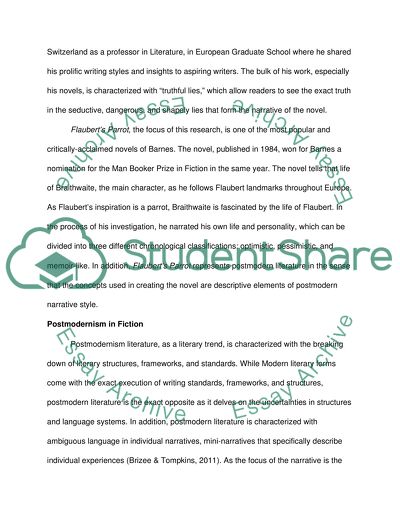Cite this document
(“Postmodernism in Julian Barnes Flaubert's Parrot Essay”, n.d.)
Retrieved from https://studentshare.org/literature/1394178-postmodernism-in-julian-barnes-flauberts-parrot
Retrieved from https://studentshare.org/literature/1394178-postmodernism-in-julian-barnes-flauberts-parrot
(Postmodernism in Julian Barnes Flaubert'S Parrot Essay)
https://studentshare.org/literature/1394178-postmodernism-in-julian-barnes-flauberts-parrot.
https://studentshare.org/literature/1394178-postmodernism-in-julian-barnes-flauberts-parrot.
“Postmodernism in Julian Barnes Flaubert'S Parrot Essay”, n.d. https://studentshare.org/literature/1394178-postmodernism-in-julian-barnes-flauberts-parrot.


